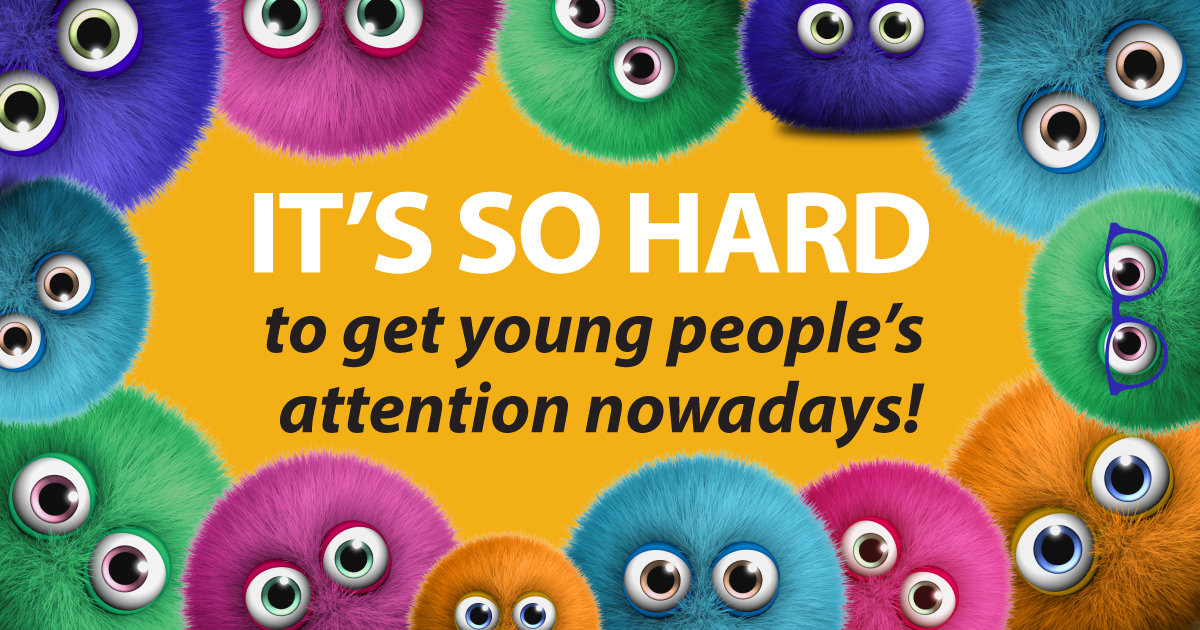
Making content to attract younger members
Whenever the question of how to reach new, young members comes up, you’ll see recommendations like, “Make relevant, valuable and authentic content that displays your values,” and you have to wonder what the writer thinks it actually means.
Now, this is actually good advice, but it can feel incredibly generic. I know this because I’m guilty of writing those kinds of things, too. Every credit union has its own unique situation, as do their members, and so well-intentioned advice gets fuzzy and nebulous.
So today I’m doing my best to get more specific. I can’t know your CU’s membership better than you, but there’s a lot of valuable discussion we can have about the problems your younger members are facing today. From there, we can look at the types of content that actually might be considered relevant and authentic.
So, about those “short” attention spans…
It’s so hard to get young people’s attention nowadays! It’s those phones and the internet!
Let’s get something straight, right away. Young people have plenty of attention span for things that interest them.
There are a multitude of reasons why they might be ignoring certain content. The most obvious of these reasons being that there are too many things to pay attention to.
With everything that modern media would like to spam directly into our eyeholes, selective attention has become not just a skill, but a necessity. People have learned to tune out the noise until they find something they like, because doing anything else is madness.
With all of the garbage they have to ignore, it’s easy to see why a lot of people stick to the content they think is fun.
Trustworthiness is crucial
That selectivity has also extended to credibility. People need information and assistance they feel they can trust, now more than ever before.
Misinformation is rampant, and the situation doesn’t seem to be improving. Younger people might not even remember a time when we could easily separate facts from opinions and take the news at face value. Fact-checking every piece of information is exhausting, and the need to do so has bred a lot of mistrust.
But beyond politics and social issues, there’s one more thing that creates instant disgust: no matter how clever or useful a piece of content is, you can lose all of that credibility as soon as your helpful or informative content morphs into a sales pitch.
Remember: Advertising is great and it really works, but not every piece of content needs to be a promotion in disguise.
Be honest. Be human. Be better.
I maintain that the best thing CUs can do for young people is to help them understand and navigate the world of finance. This means financial education and outreach, with no strings attached.
Even “basic” topics, like buying your first car, saving for your first home, or dealing with student loans, are under-represented. There’s no harm in starting there.
But there’s also a lot of stuff younger people really want and need to know, but have trouble finding good, solid, safe info about. For example, difficult topics are hardly ever covered: “What if my parents can’t or won’t help with college?”, “My parents are getting divorced!”, “My parents are terrible with money — how do I keep from repeating their mistakes?” or “I have to start paying rent when I turn 18. Now what?”
Younger members are hungry for helpful, credible information, but they’re not used to trusting just anyone. You might have to get comfortable with the idea of connecting with only a few people at first. But every credit union should understand how communities build and grow into the future.
The human side of credit unions is what separates them from other financial institutions. If you want to reach more young people, you need to show them you’re not just another bank.
- 10 things that need to be on your website (but probably aren’t) - April 22, 2025
- In Case You Missed It – 3.12.25 - March 11, 2025
- Three young members you can help in 2025 - January 14, 2025
